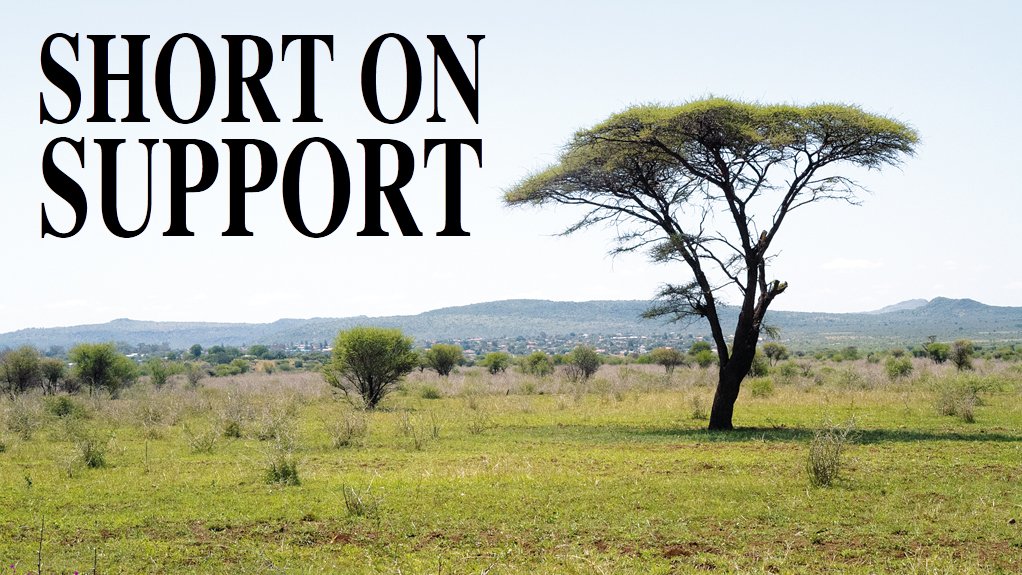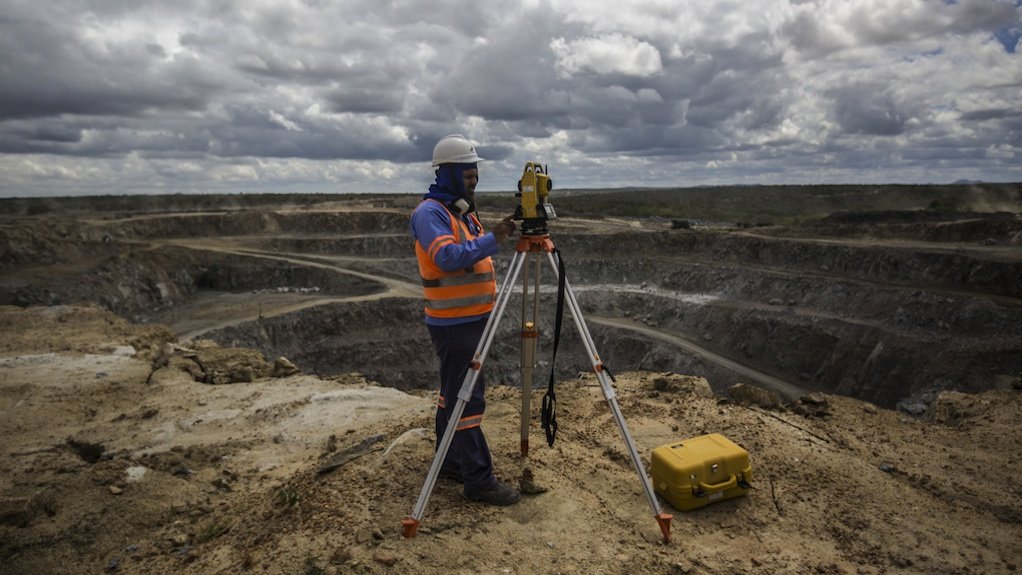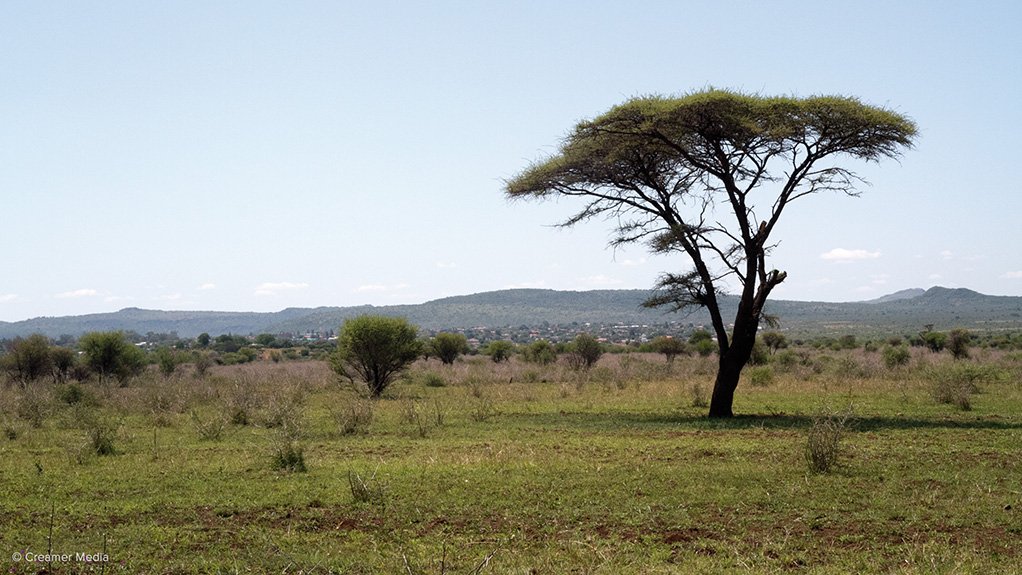Funding dearth, restrictive laws and lack of leadership from govt stifling SA junior miners





EXPLORERS SHYING AWAY Legislation in South Africa is resulting in potential explorers shying away from the country, and looking to explore for minerals elsewhere
Photo by Bloomberg
HOT TOPIC The panel discussion on the financial challenges being faced by the junior mining sector highlighted a general unavailability of capital
Photo by Dylan Slater
SOUTH AFRICASmall remote and impoverished communities depend on junior miners to bring in new jobs, along with farming as the two major contributors to their small regional economies
Photo by Duane Daws
The junior mining sector in South Africa has “huge potential” to grow and re-establish itself in the domestic mining environment; however, this potential is being blunted by a lack of funding, restrictive legislation and a lack of leadership from the Department of Mineral Resources (DMR) and government.
This is the sentiment expressed at the yearly Junior Mining Indaba, held earlier this month at The Country Club, in Auckland Park, Johannesburg.
Speaking during a Junior Mining Indaba panel discussion on obstacles and challenges facing junior miners in the quest for funding, Botswana Diamonds executive chairperson John Teeling said there was simply “no money” and that it had been impossible for the bulk of junior miners to raise significant sums of money from equity financing.
Attempting to operate startup and junior mining companies during the past couple of years had been a “complete disaster”, he said. Teeling explained that the type of people who provided capital tended to do so at the end of a cycle, as “they have made a lot of money elsewhere and think that the future is going to be a little more rosy”, citing their intention to capitalise on any upswing in the mining industry.
With respect to the funding market changing its stance toward the junior mining industry in terms of its willingness to lend, Teeling noted, cautiously, that there was a “slight improvement”, implying that lenders appeared to be a little more willing to consider ‘sinking’ capital into junior mining projects. However, it remained difficult “to get the type of private money or the small percentage of funds that go to very speculative investments”, he added.
Reinforcing Teeling’s sentiment was Carton Capital director Markus Bachmann, who added that it was significantly difficult to access funding for the junior mining sector globally in most other mining jurisdictions, not only locally. “Investors are prudent during the downcycle,” he stated, alluding, however, to signs of a possible upturn, with “green shoots” appearing in the past three to six months in the Canadian and Australian mining industries.
“A global perception of South Africa is that it is a risky climate [in which to invest in mining],” Bachmann noted.
He explained the difficulty in trying to establish and operate a junior mine in South Africa, using the analogy of a football game between an overseas team (representing the miner and/or explorer) and the local team (representing government and the DMR) being played under unfair conditions. “If you come to South Africa, you are told: ‘[Government and/or the DMR] are happy to have you here, but you are allowed to have only seven players, with the goalkeeper’s arms tied behind his back . . . and, most of the time, the score must be in favour of the home team’.”
Therefore, Bachman said, the DMR and government should “not be surprised that no one wants to play here”, adding that even ‘local teams’, with access to willing experts and on-the-ground know-how, let alone pioneering Canadian and Australian outfits, were not interested.
Consequently, the junior mining sector had been severely impacted on by a lack of funding, leading to dire consequences for many explorers and startup miners, echoed Global Diamond Network director Dr John Bristow, who added that “it has almost killed our business”.
He noted that the availability of funds and a willingness to invest would get worse before it improved.
Bristow highlighted that the decline in capital being made available to junior miners and explorers would have a “profound effect” on small impoverished communities, many of which historically relied primarily on farming and mining for jobs.
A lot of previously labour-intensive farming operations have become mechanised, inundating small regional towns with job seekers in the face of increasing use of machinery in the growing farming sector. The same effect is prevalent in the mining sector, with many small mines having closed or scaled down because of inadequate capital, he elaborated. The decline in the available household income of small remote communities, also swelled by the persistence of job shrinkage in the wider mining sector, accelerates social unrest, and foments protest.
Small mineral deposits in South Africa may, Bristow believes, be the key to unlocking growth in terms of decelerating unemployment and empowering impoverished communities. Where there is an enabling environment with realistic and sector-friendly mining legislation designed to attract junior miners, mineral explorers and mining- associated entrepreneurs can be expected to create jobs in the areas containing these small, but lucrative, deposits.
Bristow further highlighted that, with the increased exploration and operation of small mines in the remote and outlying regions of South Africa, regional economic growth would result in an increase in employment and, consequently, less social unrest and fewer protests by dissatisified and impoverished communities.
He said change was possible, citing the Peruvian mining industry’s about-turn in the way it governs the industry. “Peru had similar inequalities as South Africa. It had a similar troubled past and a civil war.”
However, in the mid-1990s, Peru’s mining legislation was “completely revised”, resulting in a lucrative and attractive mining industry, with the country emerging with a gross domestic product growth rate of at least 5% a year and a poverty level of 25%, down from 60%.
In this regard, Bristow highlighted that operating and potential junior miners in South Africa needed to be “mean and lean” with their capital and should not try to become senior miners overnight. Juniors should not invest wastefully on expensive assets such as head offices in affluent suburbs or company jets, he declared. Success was the fruit of diligence.
Future Positivity?
Venting frustration at pessimistic views of the industry and a misplaced lack of confidence in a future upswing of commodity prices and demand, Teeling said junior miners needed to allay such behaviour with optimism – “this is what we do . . . miners are explorers; we look to the future, we do not really care about . . . short-term variations”.
He noted that being optimistic entailed regarding the current downturn for what it was – a cycle. “I have been through many mining cycles and there really is nothing different . . . they always rebound,” he assured, adding that the current downturn was just a “blip in the economy”. However, while this was true, the hard work required needed to be enabled and seldom went unrewarded.
Bristow also provided reassurance of a resurgence in the local mining industry, saying that South Africans were known to be resilient: “We will pull through these current tough times.”
Further, he declared: “There are a lot of midtier deposits in South Africa and, if we apply our minds and skills, we have huge scope to rebuild junior industry.”
A major form of assistance to the local mining industry – and especially empowering to junior miners – would be improved leadership from the DMR and government, Bristow concluded.
Comments
Press Office
Announcements
What's On
Subscribe to improve your user experience...
Option 1 (equivalent of R125 a month):
Receive a weekly copy of Creamer Media's Engineering News & Mining Weekly magazine
(print copy for those in South Africa and e-magazine for those outside of South Africa)
Receive daily email newsletters
Access to full search results
Access archive of magazine back copies
Access to Projects in Progress
Access to ONE Research Report of your choice in PDF format
Option 2 (equivalent of R375 a month):
All benefits from Option 1
PLUS
Access to Creamer Media's Research Channel Africa for ALL Research Reports, in PDF format, on various industrial and mining sectors
including Electricity; Water; Energy Transition; Hydrogen; Roads, Rail and Ports; Coal; Gold; Platinum; Battery Metals; etc.
Already a subscriber?
Forgotten your password?
Receive weekly copy of Creamer Media's Engineering News & Mining Weekly magazine (print copy for those in South Africa and e-magazine for those outside of South Africa)
➕
Recieve daily email newsletters
➕
Access to full search results
➕
Access archive of magazine back copies
➕
Access to Projects in Progress
➕
Access to ONE Research Report of your choice in PDF format
RESEARCH CHANNEL AFRICA
R4500 (equivalent of R375 a month)
SUBSCRIBEAll benefits from Option 1
➕
Access to Creamer Media's Research Channel Africa for ALL Research Reports on various industrial and mining sectors, in PDF format, including on:
Electricity
➕
Water
➕
Energy Transition
➕
Hydrogen
➕
Roads, Rail and Ports
➕
Coal
➕
Gold
➕
Platinum
➕
Battery Metals
➕
etc.
Receive all benefits from Option 1 or Option 2 delivered to numerous people at your company
➕
Multiple User names and Passwords for simultaneous log-ins
➕
Intranet integration access to all in your organisation





















